 Figure 1
Figure 1
The pigeon is a serious pest bird.
The common pigeon (Columba livia) that thrives throughout Missouri and most other states was developed from the European rock dove and introduced into this country as a domesticated bird (Figure 1). When these birds escaped captivity, they formed feral populations. Today, the pigeon is probably the most serious bird pest associated with human habitations.
Pigeons are commonly found around farmyards, grain elevators, feed mills, parks, city buildings, bridges and other areas that provide roosting, loafing and nesting sites (Figure 2). They are also a common sight around home bird feeders.
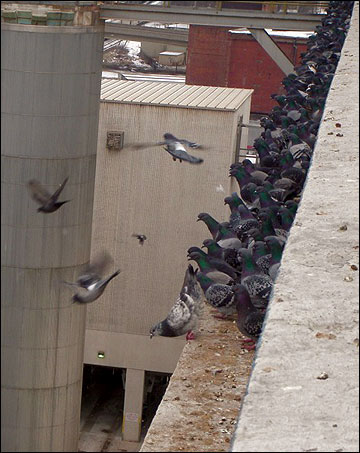 Figure 2
Figure 2
Pigeons can become a nuisance when large groups gather atop city buildings.
Problems caused by pigeons
Pigeon droppings on park benches, cars and buildings are not only unsightly and smelly but also corrosive, particularly to buildings (Figure 3). Large amounts of droppings also can kill vegetation.
Around farms, grain elevators and feed mills, pigeons consume and contaminate large quantities of grain.
Pigeons have been implicated in the transmission of diseases such as pigeon ornithosis, encephalitis and salmonella food poisoning. However, the actual incidence of transmission of diseases from pigeons to people is difficult to assess. Disease outbreaks that are directly attributed to pigeon flocks are rare.
Pigeon manure, if allowed to accumulate for several years, can harbor the causal agent of histoplasmosis, a systemic fungus disease that affects the human respiratory tract. In severe cases, histoplasmosis can be fatal. The external parasites of pigeons include various species of mites, fleas, ticks and bugs.
In addition to being a threat to human health, pigeons can be a threat to human safety, particularly around airports, where pigeon flocks have collided with aircraft, causing human fatalities.
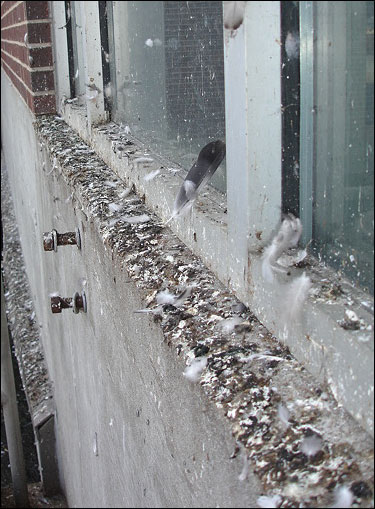 Figure 3
Figure 3
Pigeon droppings can be a health hazard if allowed to accumulate.
Biology and behavior
Pigeons inhabit lofts, church steeples, attics, caves and ornate architectural features of buildings where openings and flat surfaces allow roosting, loafing and nest building. Nests consist of sticks, twigs and grasses clumped together to form a crude platform.
The birds subsist on spilled or improperly stored grain, garbage or other food materials people provide for them intentionally or unintentionally. In some urban areas, feeding pigeons is a form of recreation.
Pigeons are monogamous, having only one mate at a time, and pigeon populations usually have an equal number of males and females. The male cares for and guards the female and the nest. Eight to 12 days after mating, the female lays one or two eggs. About 18 days later, the eggs hatch. The young pigeons, or squabs, are fed a secreted substance called pigeon milk and leave the nest at 4 to 6 weeks of age. More eggs are usually laid before the first young have left the nest. Breeding occurs throughout the year, but peak reproduction is in the spring and fall.
Domesticated pigeons can live 15 or more years. However, in urban populations, few pigeons live for more than three or four years.
Damage prevention and control methods
Elimination of feeding, watering, roosting and nesting sites is important in the development of a long-term pigeon-control program. Eliminating feeding sites includes discouraging people from feeding pigeons in public areas, and cleaning up spilled grain around grain elevators and feed mills.
A bird-control program using repellents and toxicants requires careful attention to detail. Be sure to follow all product label instructions when using repellents or toxicants. Do not take shortcuts, as they may be dangerous or cause the program to fail.
An integrated pigeon management program that incorporates both lethal and nonlethal control techniques is worth the investment considering the economic damage and health threats caused by large populations of pigeons. Although feral pigeons are not protected by either federal or state law in Missouri, check local laws and ordinances before taking control measures.
Exclusion
Excluding access to indoor roosts and nesting areas is a preferred pigeon-control method. Block building openings — lofts, steeples, vents, eaves, windowsills and other surfaces that provide roosting sites — with wood, metal, glass, masonry, 3/4-inch rustproof wire mesh, or plastic or nylon netting.
Changing ledge angles to 45 degrees or more can discourage roosting, although pigeons may still be able to roost on these angled ledges. If you decide to try this method, form and fasten sheet metal to ledges to achieve the desired angle (Figure 4).
Screening ornamental architecture with netting can exclude pigeons but is not always acceptable.
Screening the underside of the rafters with netting or 1/4-inch wire mesh screening can prevent roosting in machine sheds, barns, hangers and similar structures (Figure 5). In truss-rafter construction, purlins must be installed between the rafters to support wire-mesh screening but are not needed when plastic netting is used.
Permanent mechanical repellents such as “porcupine wire” or “bird spikes” can deter pigeons from roosting on a building (Figure 6). These devices consist of stainless steel prongs with sharp points that stick out at various angles. The prongs are fastened to a solid base that can be installed on a windowsill, ledge, eave, roof peak or other building surface on which pigeons are likely to roost. Purchase and installation of porcupine wire can be expensive, but the results may justify the cost. To ensure effective long-term results, routinely clean the prongs, which may accumulate grass, twigs and other debris birds used to build nests.
Parallel strands of 16- to 18-gauge steel wire or 80-pound-test monofilament line tightly stretched above support cables, narrow ledges, conduits and similar surfaces can keep birds from settling on them. Heavily used areas may need lines stretched at 2, 5 and 7 inches above the surface.
Overhead monofilament grid systems, 1 to 2 feet square, can exclude pigeons from small, enclosed outdoor areas such as courtyards. Although persistent pigeons may penetrate these systems, the grids will reduce their activity.
In addition, electric shock bird control systems are available for repelling many species of birds, including pigeons. These systems consist of a cable embedded in plastic with electrical conductors. When a pigeon makes contact with the conductors and the cable, it receives a shock that repels but does not kill it. These devices and their installation are expensive, but their effectiveness may justify the investment.
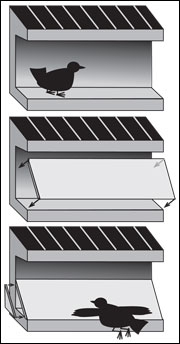 Figure 4
Figure 4
Increasing the angle of a ledge to at least 45 degrees discourages roosting.
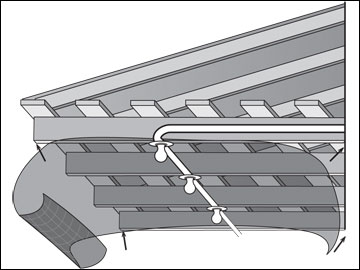 Figure 5
Figure 5
Netting can be used to exclude birds from rafters.
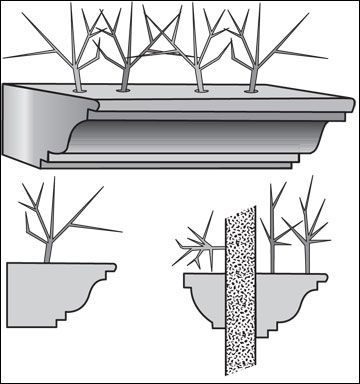 Figure 6
Figure 6
Steel prongs called porcupine wire or bird spikes can prevent birds from landing on a surface.
Frightening
Some control methods commonly used for other birds are not effective for pigeon control. Noise-making devices like firecrackers or alarms have little permanent effect on roosting pigeons. High-frequency (ultrasonic) sounds, inaudible to humans, are also inaudible to pigeons. Balloons and rubber snakes also are ineffective deterrents.
Revolving lights, colored flags and use of Mylar tape in small roosting areas can be effective in combination with other exclusion techniques. One effective method is to hang vertical strips of Mylar tape every 6 inches across an opening or ledge used for roosting.
Streams of water can be used to move pigeons from roosts but must be sprayed repeatedly until the birds have established themselves elsewhere.
Toxicants — Avitrol
Avitrol is classified as a chemical frightening agent for pest birds, but it can also be used as a toxicant in areas where bird mortality is acceptable. It is one of the most effective pesticides registered for year-round control of pigeons but is classified as a restricted-use product that must be applied by a certified pesticide applicator.
The active ingredient in Avitrol is 4-aminopyridine, which is lethal to pigeons that consume it in sufficient quantities. Research indicates that secondary poisoning (poisoning of animals that eat the poisoned birds) is not a danger when using the product. So, use of Avitrol for pigeon control may be less disturbing to the public than use of other toxicants. When Avitrol is used according to label directions, dying birds display distress symptoms and erratic behavior within moments of consuming the treated bait. This behavior frightens off the other birds of the flock and, thus, the control program results in the death of relatively few birds.
Dilution rates
To achieve the desired flock-alarming effect, dilute (blend) Avitrol-treated whole-kernel corn with clean, untreated whole corn. The higher the dilution, the lower the mortality. In urban areas where high mortality may cause adverse public reaction, use a blend of 1:29 (1 part Avitrol-treated to 29 parts untreated whole corn), which takes longer to achieve control but produces low mortality. Where high mortality is not a concern, a blend of 1:19 or even 1:9 may be used to achieve control more quickly.
Bait sites
Select bait sites based on the pigeons’ daily movement patterns between feeding, loafing and roosting areas. The number of sites needed depends on the size of the area being treated and the pigeon population. Bait sites should be located in areas that are normally frequented by the birds, over which rigid control of human access can be maintained, and that are otherwise free from disturbance.
In general, the closer the bait site is to the birds’ normal feeding area, the more successful the baiting will be. In urban areas, flat rooftops make excellent bait sites. Although pigeons do not normally feed on rooftops, they do frequent them, and access can usually be rigidly controlled. With persistence, you can train pigeons to feed almost anywhere.
Prebait
Once bait sites have been selected, use prebaiting techniques to train the pigeons to eat at them. Prebaiting is the most important aspect of a successful baiting program. If the prebaiting is not done correctly, the entire program may fail.
Prebaiting must be done for 21 to 28 days. Birds are suspicious of change in their daily routine, so the prebaiting and subsequent use of toxic bait must be done at the same time and in the same manner every day.
Use quality, untreated whole-kernel corn as a prebait because corn is highly accepted by pigeons and too large for smaller resident birds, such as song sparrows and swallows. Place the prebait on firm, relatively flat surfaces or in wide, shallow wooden or metal trays. Baits are most effective when set out in several small piles or heaps, allowing many pigeons to feed at once.
Pigeons usually feed most vigorously early in the morning right after leaving the roost, so the sites should be baited just before sunrise. Record the amount of prebait placed and consumed each day so as to determine the amount of Avitrol-treated bait that will be needed. Generally, 100 feeding pigeons will consume 7 to 8 pounds of whole corn per day.
Carefully observe the bait sites to ensure no nontarget birds, such as cardinals, blue jays and mourning doves, are attracted to the sites. If protected birds do appear at a site, do not apply toxic bait. If only one baiting site is being used, or if protected birds begin using all the sites, modification or abandonment of the site or sites is necessary.
Toxic bait. Remove all prebait before putting out toxic bait. Generally, the amount of toxic bait put out needs to be only about half the amount of prebait used daily.
When the toxic bait is placed, have someone observe from a hidden location. Most of the birds will leave the bait pile before the poison takes effect, but any that die near the bait site should be removed promptly.
Pick up any unconsumed bait at the end of the day. This bait can be used for multiple applications, if necessary.
Birds remaining after the initial control period may be bait-shy, so if a second application of toxic bait is necessary, wait three weeks and begin again with prebaiting.
Toxicants — DRC-1339
DRC-1339 is a restricted-use pesticide registered for the control of pigeons. It can be used only by USDA APHIS-Wildlife Services employees or persons working under their direct supervision.
The toxicity of DRC-1339 to birds varies considerably. Starlings, red-winged blackbirds, crows and pigeons are most susceptible. Other birds, such as house sparrows and hawks, are somewhat resistant. Therefore, in many areas, DRC-1339 may be safer to use than other toxicants.
DRC-1339 is a slow-acting toxicant that causes death by uremic poisoning, without the convulsions or spasms caused by other toxicants. Because of the slow rate of death, the majority of dead birds are found at roost sites and birds do not develop bait-shyness, which allows for extended baiting programs to be conducted, until control is achieved.
As in other baiting programs such as with Avitrol, prebaiting is critical to successful control. Contact the USDA APHIS-Wildlife Services office in Columbia, Missouri at 573-449-3033 for more information on the use of DRC-1339 for pigeon control.
Nontoxic chemical repellents
Nontoxic chemical repellents are also available as pastes or liquid sprays. These materials produce a sticky substance that makes pigeons uncomfortable when they try to use treated sites as perches and leads them to find a more inviting place to roost or loaf. So, treat all potential roosting and loafing surfaces in the area, or the pigeons will move only a short distance to an untreated surface.
Apply paste repellents in 2-inch thick rows about 2 inches from the outside ledge and spaced 2 to 3 inches apart to ensure that the pigeons cannot land between the rows without becoming entangled. Avoid applying these repellents over dirt or dust. Protect porous surfaces from possible staining by applying an undercoating of a waterproof silicone or paint base. Other surfaces can be protected by cover them with masking tape or waterproof duct tape before applying the repellent.
The effectiveness of these repellents diminishes over time, especially in dusty areas. In most cases, the substances will repel pigeons for about one year before reapplication is necessary.
Trapping
Traps are another effective pigeon-control method and can be purchased or constructed (Figure 7). Pigeon traps vary in size; however, traps that are 9 feet long, 4 feet wide and 8 inches high are commonly recommended. These recommended traps are separated into three sections, with the outer two sections having multiple one-way doors. A door lifts when a pigeon pushes through it to feed on the corn. Once the pigeon completely enters the trap, the door falls, capturing the pigeon. Captured pigeons filter through another one-way door into the center section of the trap, where a large pile of bait and a water dish allows them to live comfortably until the trapper returns.
If hawks are in the area, cover the center section of the trap to prevent them from killing the trapped pigeons. To make a cover, simply bend a sheet of 1-by-1-inch wire mesh over the top and sides of the center section.
The best location for traps is near the pigeons’ major loafing areas. For trapping success during warm summer months, place traps at pigeon watering sites, such as near rooftop cooling condensers of buildings.
Leave two decoy birds in each trap at all times to lure other pigeons. Ensure the decoy birds always have fresh food and water.
If you have no decoy birds when initially setting a pigeon trap, use of the prebaiting method can significantly enhance the trap’s success. To prebait, place attractive bait such as corn or milo around the outside of the traps. After three to four days, place the bait inside the traps to begin capturing pigeons.
Regularly monitor the traps; check them at least every other day.
If trap-shyness develops, wire all one-way doors open to allow pigeons to enter the trap, feed and exit freely for five days. This activity will lure shyer pigeons to feed on the bait and increase overall trap success. Relocate the traps if they fail to catch any pigeons or if little activity is noticed around them.
To remove captured pigeons, unwire the large door on top of the center section. Slightly open the door with one hand and reach in and grab a pigeon with the other hand. The pigeons will not hurt you, so do not be cautious. Close the door immediately after you have a pigeon to prevent the others from escaping.
You can euthanize each pigeon individually as you remove it from the trap, or place the pigeons in another container to euthanize them at different location. Continue to remove pigeons until only two remain in the trap. Leave these as decoy birds, rebait the site and provide fresh water.
Pigeons are an invasive species and no permits are required for their take. A list of humane euthanasia methods can be found on the American Veterinary Medical Association website, avma.org/.
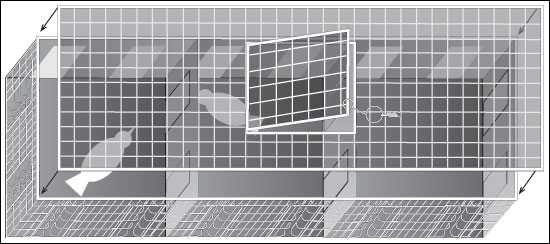
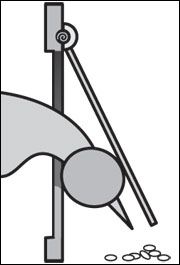 Figure 7
Figure 7
Bait attracts pigeons into a trap, and the trap's one-way doors prevents the pigeons from exiting.
Shooting
Shooting with a .22-caliber rifle (preferably using short-range pellets), a .410-gauge shotgun or a high-powered air rifle can eliminate a small flock of pigeons from an area. However, many areas have ordinances prohibiting the discharge of firearms, so check local laws before using this control method.
Nest destruction
Destroying nests and eggs at two-week intervals can reduce pigeon numbers. This method should be used in conjunction with other control methods to ensure an effective pigeon-control program.
Contraceptives
A bird contraceptive has recently been registered by the Environmental Protection Agency for controlling nuisance pigeons. OvoControl P is designed to be used with other prevention and control techniques in an integrated approach for controlling pigeons, primarily in urban locations or in large areas where a substantially reduced population is desired. OvoControl P interferes with egg hatchability. The product is nonlethal and is administered to the birds on a daily basis as a ready-to-use bait. For more information and a copy of the EPA-approved label, visit the OvoControl P website, ovocontrol.com/.
Bird control assistance
For more information on preventing and controlling nuisance bird roosts, contact your local MU Extension center. For technical assistance controlling nuisance bird roosts, contact:
- USDA APHIS–Wildlife Services
1714 Commerce Court, Suite C
Columbia, MO 65202
573-449-3033
aphis.usda.gov/wildlife-services/publications/technical
Additional information
- Internet Center for Wildlife Damage Management, icwdm.org/
- Missouri Department of Conservation, mdc.mo.gov/
- USDA APHIS–Wildlife Services, aphis.usda.gov/wildlife-services